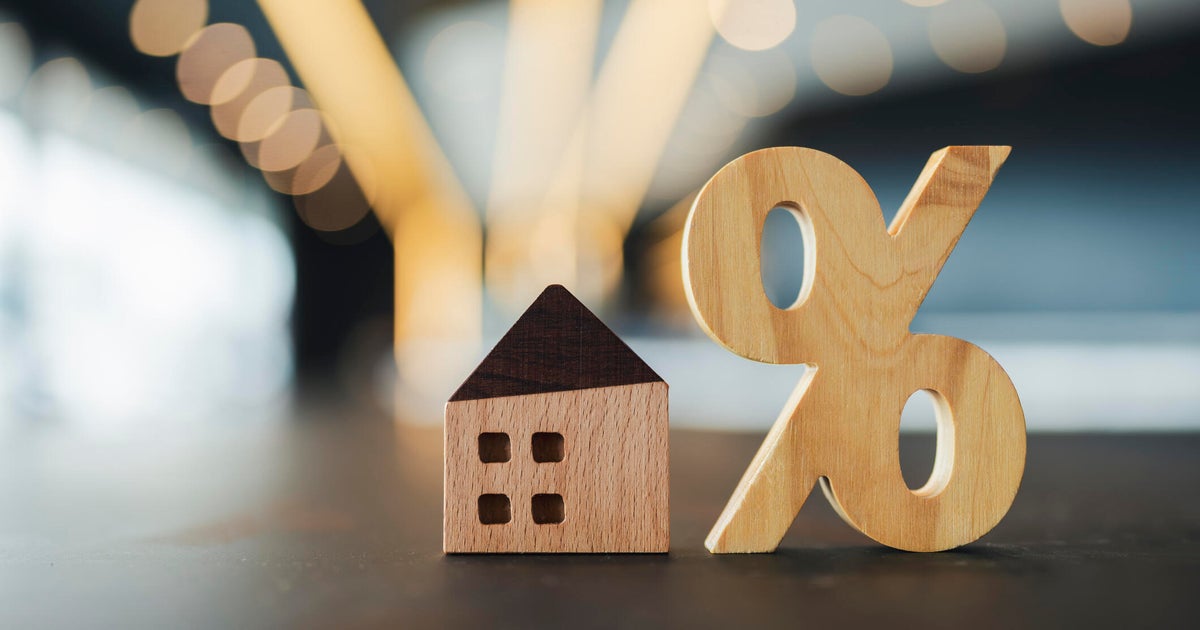Here's who can refinance their home next week
Borrowing has been a costly endeavor recently, with elevated rates driving up the cost of everything from personal loans to credit cards and home equity loans. Nowhere is this more evident, though, than in the housing market. With the average 30-year fixed mortgage rate at 6.41% currently, today's mortgage rates are in stark contrast to what was seen during the height of the pandemic, when it was possible to secure a mortgage with a rate of 3% or lower.
The dramatic rise in mortgage rates over the last couple of years has made the idea of refinancing seem like a distant memory. After all, homeowners who locked in the ultra-low pandemic-era rates have little incentive to consider it, as it's hard to justify trading in a 3% mortgage for one that's more than double that rate. And while mortgage rates have cooled somewhat in recent weeks, they generally haven't fallen enough to incentivize those who bought at higher rates recently, either.
That said, the economic winds are shifting. Inflation, which had been the primary concern for the Federal Reserve, has been cooling and the job market has shown signs of weakening. These changing conditions have set the stage for the Fed to make its first rate cut of the year next week. While it's expected to be a modest 25-basis-point decrease, it could still have an impact on mortgage rates. So which homeowners stand to benefit after rates drop next week? That's what we'll detail below.
See if a refinance is worth it for you here now.
Here's who can refinance their home next week
Here's how different groups of homeowners might fare if they choose to refinance after the expected rate cut.
The 7.50% borrowers: The prime candidates
Homeowners who secured mortgages when rates were peaking are likely to be the prime candidates for refinancing. For example, on a $300,000 loan with a 30-year fixed-rate mortgage at 7.50%, the current monthly payment is about $2,097.
If mortgage rates were to drop by 25 basis points in line with the expected Fed rate cut, dropping today's 6.41% 30-year mortgage rate to 6.16%, these homeowners could potentially refinance to a new monthly payment of about $1,830. This represents a monthly savings of $267, or about $3,204 annually. Over the life of their loan, they could save a staggering $96,120 in interest payments.
It's important to note, though, that it's unlikely that mortgage rates will fall that drastically next week, as today's rates have already mostly accounted for the anticipated Fed rate cut. That said, next week's Fed rate cut will still likely have a positive impact on mortgage rates — and shopping around to find the lowest one could result in big savings for these homeowners.
Find out how affordable the right mortgage loan could be now.
The 7% borrowers: Significant savings awaits
Homeowners who bought their homes with a 30-year fixed-rate mortgage at or near 7% could also see significant benefits from refinancing. For example, the current monthly payment on a $300,000 loan at that rate is about $1,996.
If these homeowners refinance to a new 30-year mortgage rate of 6.16% next week, their monthly payment would drop to about $1,830, saving them $166 per month or $1,992 annually. Over 30 years, this could add up to about $59,760 in interest savings.
The 6.5% borrowers: More modest savings
Even homeowners who secured a 30-year mortgage at 6.5% just a few months ago could also benefit from refinancing, albeit more modestly. At that rate, their current monthly payment on a $300,000 loan is about $1,896.
Refinancing their current mortgage loan to a loan with a rate of 6.16% next week would lower their monthly payment to about $1,830, saving them about $66 per month or about $792 annually. Over the life of the loan, this could still result in a total savings of $23,760.
Other factors to consider before refinancing
As outlined above, even a relatively small decrease in interest rates can translate into significant savings over time, especially for those who borrowed when rates were at their peak. However, it's important to note that refinancing your mortgage loan isn't just about the interest rate. It's important to also consider the closing costs, which typically range from 2% to 6% of the loan amount.
For example, on a $300,000 loan, the closing costs could be anywhere from $6,000 to $18,000. So, if you're planning to refinance, you need to calculate the "break-even" point — which is how long it will take for the monthly savings to offset the closing costs. If you plan to stay in your home beyond this break-even point, refinancing could be a smart financial move.
The bottom line
As the Federal Reserve prepares to make its first rate cut, homeowners across the country are holding their breath, hoping for an opportunity to ease their mortgage burdens. While not everyone will find refinancing beneficial, for many — especially those who borrowed at rates of 6.5% or higher — next week could mark the beginning of a new chapter in their homeownership journey, one with a little more breathing room in the monthly budget.






